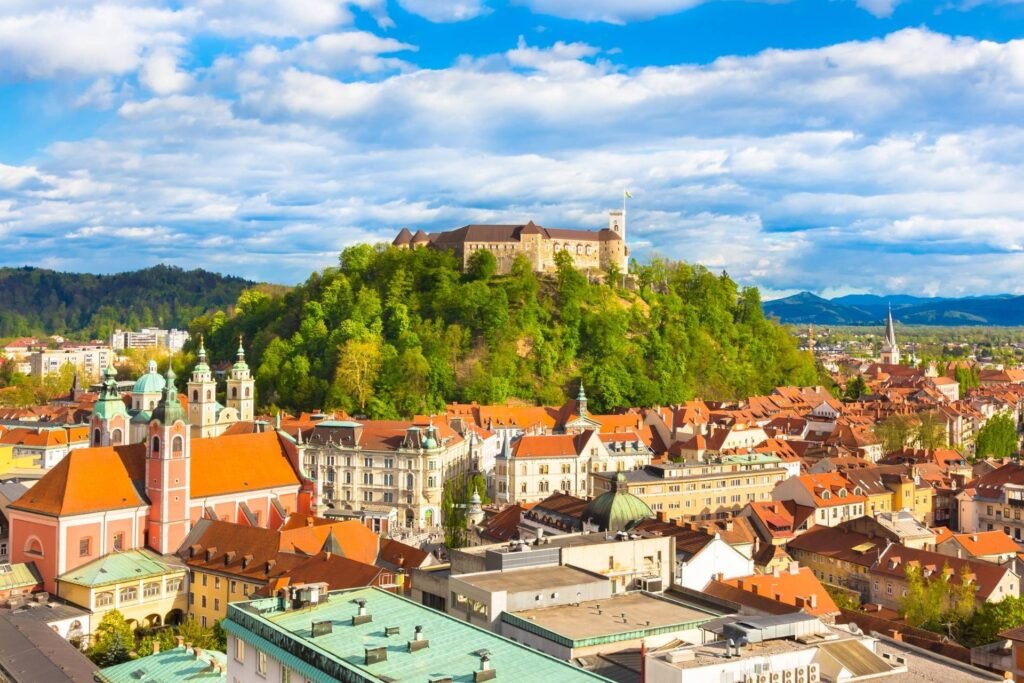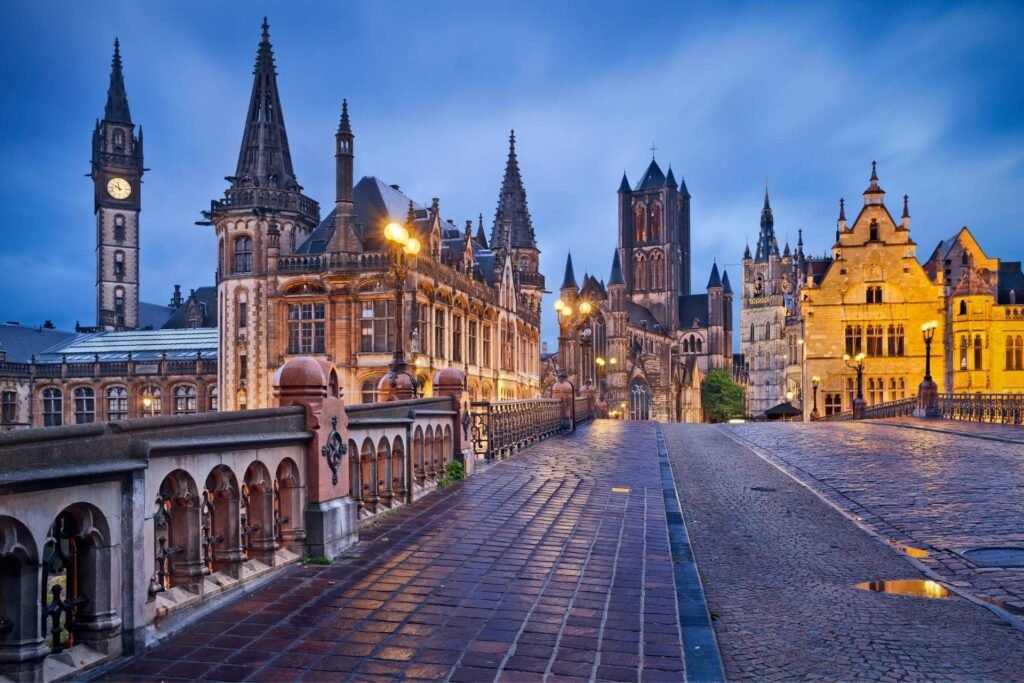Why These ‘Boring’ Cities Are Actually Travel Gold
Picture this: you’re scrolling through travel blogs, and every destination looks like a glossy magazine cover. Paris, Tokyo, New York – the same places everyone visits, posts about, and crowds into. But what if the real magic happens in the places nobody talks about? Those underrated cities that get dismissed as “boring” might just be the travel gold you’ve been searching for.
The truth is, some of the world’s most incredible experiences are hiding in plain sight. While everyone fights for the perfect Instagram shot at the Eiffel Tower, you could be discovering authentic local culture, enjoying affordable adventures, and creating memories that actually matter. These hidden gem cities offer something precious in our over-connected world: genuine surprise.
The Problem with Popular Destinations
Everyone knows the drill. You book that dream trip to Rome, only to spend half your time waiting in lines and dodging selfie sticks. Your “authentic” Italian experience involves eating overpriced pasta next to fifty other tourists while someone livestreams their carbonara.
Popular destinations have become victims of their own success. The very qualities that made them special – the culture, the atmosphere, the local flavor – get diluted by mass tourism. Prices skyrocket, locals move away from city centers, and what remains is often a theme park version of the original.
This tourism saturation creates a domino effect. Infrastructure gets overwhelmed, environmental damage increases, and the authentic character that drew visitors in the first place slowly disappears. Meanwhile, overlooked destinations continue developing their unique identity without the pressure of meeting tourist expectations.
What Makes a City Seem “Boring”
Cities get labeled as boring for surprisingly shallow reasons. Sometimes it’s just bad marketing – a city might have incredible food, fascinating history, and vibrant culture, but lacks a recognizable landmark or catchy tourism slogan. Other times, these places are overshadowed by nearby famous destinations.
Take industrial heritage, for example. Cities built around manufacturing or shipping often get dismissed as purely functional, but they usually have rich working-class cultures, incredible architecture, and stories that reveal authentic parts of a country’s identity. These underestimated cities offer glimpses into real life that polished tourist destinations simply cannot provide.
Weather plays a role too. Cities with unpredictable climates or fewer sunny days get written off, despite often having cozy indoor cultures, seasonal festivals, and the kind of dramatic landscapes that make for unforgettable experiences. Sometimes the most beautiful places are the ones you have to work a little harder to appreciate.
Hidden Advantages of Underrated Cities
The beauty of off the radar cities lies in their unplanned authenticity. Without tour buses and hotel chains reshaping everything for visitors, these places maintain their genuine character. You’ll find family-run restaurants that have served the same recipes for generations, neighborhoods where locals still gather in public squares, and cultural traditions that exist for residents, not tourists.
Your budget goes further in these unexpected city destinations. The money you’d spend on one meal in Paris could cover an entire day of activities in an overlooked destination. Hotel rooms are bigger, restaurant portions are generous, and often you’ll discover that locals are more welcoming because they’re genuinely excited to share their city with someone who took the time to visit.
These destinations also offer space to breathe. Instead of rushing between must-see attractions, you can wander without purpose, strike up conversations with locals, and discover things that aren’t in any guidebook. The pace is different – more human, less frantic.

Real Examples of Travel Gold Cities
Ljubljana, Slovenia perfectly exemplifies hidden urban gems. This capital city delivers everything you’d want from a European destination – medieval castles, riverside cafes, vibrant arts scenes – without the crowds or costs of Prague or Vienna. The city center is car-free, creating a pedestrian paradise where you can actually enjoy the architecture without dodging traffic.
Kanazawa, Japan represents the art of the understated. While everyone flocks to Kyoto, Kanazawa offers equally stunning traditional districts, world-class museums, and some of Japan’s finest cuisine. The city maintains authentic geisha districts and samurai quarters where you can experience historical Japan without the tourist circus.
Porto, Portugal has been gaining recognition, but still offers incredible value compared to Lisbon. The city combines stunning architecture with a thriving food and wine culture. You can spend days exploring azulejo-covered buildings, tasting port wine in centuries-old cellars, and enjoying beaches that rival anywhere in Europe.
Ghent, Belgium gets overshadowed by Brussels and Bruges but delivers medieval charm with a university town energy. The city has managed to preserve its historical center while maintaining a living, breathing culture that doesn’t feel like a museum.
These lesser-known urban areas share common threads: they offer authentic experiences, reasonable prices, and the chance to discover something genuinely surprising.
How to Spot Tomorrow’s Hidden Gems
Finding undiscovered metropolitan areas before they become overcrowded requires looking beyond typical travel sources. Start by researching cities that locals recommend but tourism boards haven’t heavily marketed yet. Look for places with strong cultural institutions – museums, theaters, music venues – that indicate a vibrant local scene.
Transportation improvements often signal emerging destinations. Cities that recently gained better flight connections or high-speed rail links are worth investigating. Similarly, places experiencing economic revitalization frequently develop exciting food scenes, arts districts, and cultural activities.
Pay attention to what locals from famous destinations recommend. People living in Barcelona might suggest Bilbao, or residents of Amsterdam might point you toward Utrecht. They understand what makes a city special and often know places with similar qualities but fewer crowds.
Consider shoulder destinations – cities near famous places that offer similar experiences without the fame. Instead of Florence, consider Bologna. Rather than Copenhagen, explore Aarhus. These places often have the same architectural styles, cultural traditions, and culinary scenes as their famous neighbors.

The Art of Slow Travel in Boring Cities
Underappreciated destinations reward different travel approaches. Instead of cramming in tourist sites, focus on understanding the rhythm of daily life. Spend mornings in local markets, afternoons in neighborhood cafes, and evenings where residents actually go for entertainment.
These cities excel at seasonal experiences. A place that seems quiet in winter might transform completely during summer festivals. Spring might bring incredible gardens to life, while autumn could reveal stunning architecture against dramatic skies. Unconventional urban destinations often have personalities that change throughout the year.
Food becomes a gateway to culture in these places. Without tourist-focused restaurants, you’ll eat where locals eat, discovering regional specialties and family recipes that haven’t been adapted for international palates. Every meal becomes a cultural education.
Making the Most of Your Discovery
Research, but not too much. Learning basic history and cultural context helps you appreciate what you’re seeing, but over-planning can prevent spontaneous discoveries. Leave room for wandering, getting lost, and following interesting conversations wherever they lead.
Learn basic phrases in the local language, especially in places where English isn’t commonly spoken. This effort often opens doors that remain closed to tourists who expect everyone to accommodate them. Locals appreciate visitors who show respect for their culture through language attempts.
Stay longer than you initially planned if possible. Surprising city experiences often reveal themselves slowly. What seems unremarkable on day one might become your favorite discovery by the end of the week. These destinations reward patience and attention.
Why This Matters for the Future of Travel
Supporting underrated cities helps distribute tourism’s economic benefits more fairly. Instead of contributing to overcrowding in already struggling destinations, your travel spending supports communities that genuinely benefit from visitor revenue.
This approach also helps preserve the authentic character of both famous and unknown places. When tourism pressure gets distributed across more destinations, popular places can focus on maintaining their identity rather than just managing crowds.
You become part of a more sustainable travel culture that values discovery over documentation, experience over Instagram, and quality over quantity. This mindset shift changes how you see every destination, making you a better traveler regardless of where you go.
The most rewarding travel experiences often come from places that don’t try too hard to impress you. These underrated cities invite you to slow down, pay attention, and discover that sometimes the most extraordinary experiences come disguised as ordinary life. The next time you’re planning a trip, consider choosing the place that doesn’t make every “must-visit” list. You might just discover your new favorite destination.




Leave a Reply